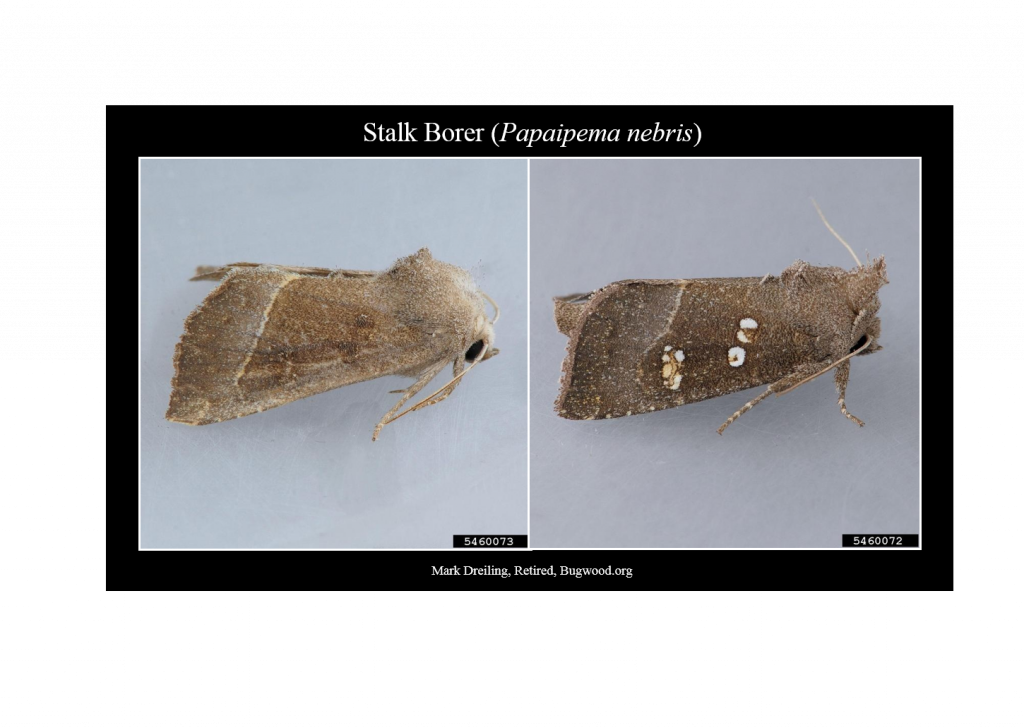Southern and Common Stalk Borers
go.ncsu.edu/readext?898271
en Español / em Português
El inglés es el idioma de control de esta página. En la medida en que haya algún conflicto entre la traducción al inglés y la traducción, el inglés prevalece.
Al hacer clic en el enlace de traducción se activa un servicio de traducción gratuito para convertir la página al español. Al igual que con cualquier traducción por Internet, la conversión no es sensible al contexto y puede que no traduzca el texto en su significado original. NC State Extension no garantiza la exactitud del texto traducido. Por favor, tenga en cuenta que algunas aplicaciones y/o servicios pueden no funcionar como se espera cuando se traducen.
Português
Inglês é o idioma de controle desta página. Na medida que haja algum conflito entre o texto original em Inglês e a tradução, o Inglês prevalece.
Ao clicar no link de tradução, um serviço gratuito de tradução será ativado para converter a página para o Português. Como em qualquer tradução pela internet, a conversão não é sensivel ao contexto e pode não ocorrer a tradução para o significado orginal. O serviço de Extensão da Carolina do Norte (NC State Extension) não garante a exatidão do texto traduzido. Por favor, observe que algumas funções ou serviços podem não funcionar como esperado após a tradução.
English
English is the controlling language of this page. To the extent there is any conflict between the English text and the translation, English controls.
Clicking on the translation link activates a free translation service to convert the page to Spanish. As with any Internet translation, the conversion is not context-sensitive and may not translate the text to its original meaning. NC State Extension does not guarantee the accuracy of the translated text. Please note that some applications and/or services may not function as expected when translated.
Collapse ▲Southern cornstalk borer (Diatraea crambidoides) and the stalk borer (Papaipema nebris) were once frequently found in fields across North Carolina. However, due to the widespread planting of hybrids expressing Bt toxins, they are rarely encountered and only in non-Bt refuge corn. Infestation of these insects in whorl stage corn is usually greatest under certain no-tillage conditions. Southern cornstalk borers overwinter as larvae in the root crown of dead corn plants and corn following corn helps insure a high carry-over borer population within the individual field, especially if no-tillage practices are followed without rotation. Infestation can reduce yield since any plant attacked in the early whorl stage will not be productive. Second generation southern cornstalk borer may infest large conventional or no-tillage corn in late July through August and can reduce yield about 5% per tunnel/plant. Borers infest the brace-root/below ground section of the corn stalk and infestation often goes unrecognized by farmers, even when infestation may be at 100%. The only successful management tool is the use of certain Bt corn hybrids.
Stalk borer (P. nebris) passes the winter in the egg stage on grasses. After eggs hatch in the spring, caterpillars initially feed on grass but later move to large stemmed plants. In conventional tillage corn this pest is restricted to weedy field borders. However, with conservation tillage, egg and caterpillar carryover may be substantial in fields with certain grasses. After herbicides are applied to kill the existing vegetation, stalk borers are forced to the corn seedlings. Stalk borer tunnel stems and injured smaller plants typically die or have no ear. Stalk borer can be reduced by killing existing vegetation in no-tillage fields at least two weeks before planting.
Insecticide treatment of both southern and common stalk borers can be difficult. Usually, detection of an economic infestation is made after the insects have bored deeply into the plant tissue. If the early leaf feeding (in the whorl) symptoms are recognized, insecticide treatment can be made with a moderate degree of success. All treatments should be made on the basis of scouting information and thresholds. See scouting guidelines for seedling pests.





